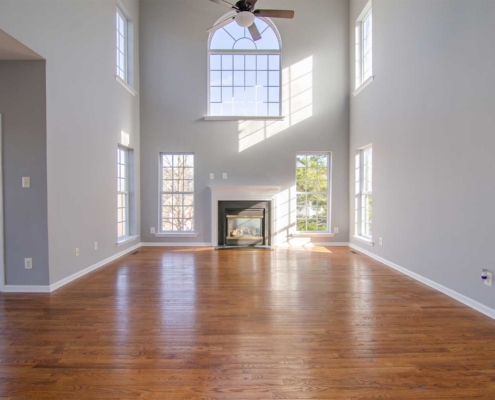NEW CONSTRUCTION INSPECTIONS
New construction inspections are typically scheduled before the builder’s final walkthrough of a brand new home. Why get a new construction inspection? No home is perfect, including new builds. Our inspectors thoroughly examine the structure and installed mechanical systems, looking for any defective materials or safety issues that the builder should correct before it’s time to hand your family the keys to the home. If you are investing your hard earned money into a new home, why not get a second set of eyes on it?
And like all our inspections, we guarantee that you will receive your report the same day as your inspection! This allows you time to provide the report to the builder in a timely manner.
Top 10 Defective Issues We Find in New Construction Inspections:
Broken/Modified Engineered Truss System
The truss system broke during installation or the installer modified to make something “fit”. Sometimes, the builder repairs these, but the truss manufacturer or a Licenses Structural Engineer MUST design and certify any repair or modification. Otherwise, when YOU sell the house, a buyer may want YOU to provide certification that repairs were done correctly. This costs a minimum of $600 just to get an engineering certificate.
Roof Covering Installed Incorrectly
Shingles installed too tightly causing the ends/edges to “lift upward.” The sun will not heat these enough to flatten over time, potentially causing leaks in your roof. Also, shingles installed with incorrect exposure are very commonly noted in new construction.
Cracked Slab Foundations
Cracks in concrete are normal. However, some builders do not properly install control joints in the concrete to allow for normal expansion cracking.
Foundation Piers Improperly Installed
Foundation piers must be installed directly under the beams they need to support and must be properly shimmed. The beams MUST be centered over the pier and not hanging over the edge as so often noted in home inspections.
Improper Siding Installation
Siding installed too tightly, fasteners overdriven, siding cracked or otherwise damaged during installation, warped or buckling, and installed without proper flashing.
Torn/Damaged Roof Shingles
Roofers often leave shingles damaged after installation. This defect happens due to carelessness and/or the use of nailed-in “foot holds”.
Cracked Floor Tiles or Backsplash in Bathrooms/Kitchens
This is almost always due to contractor negligence and carelessness.
Windows Installed Too Tightly
When the installer did not properly frame and shim the window opening during the pre-drywall phase, the windows will be installed too tightly. This is easier to correct before the drywall goes up.
Active Plumbing Leaks
Unfortunately, sometimes the plumbers forget to properly crimp pipe connections or do not use proper glues or sealants.
Electrical Issues
These vary from improperly installed light fixtures to breakers tripping from incorrect arc faults. Amazingly enough, sometimes they forget to install GFCIs in required locations.

